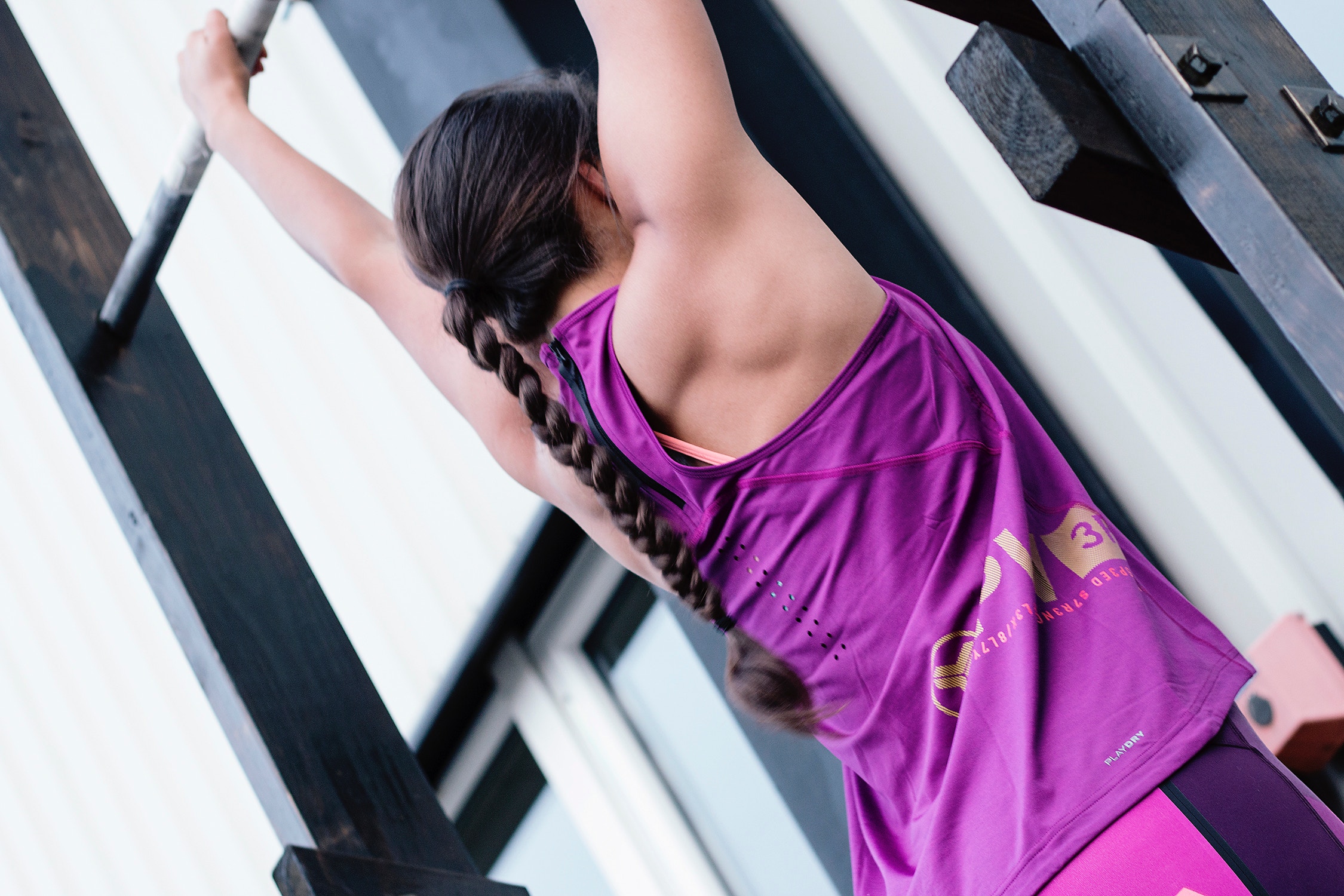I didn’t set out to do a pull-up challenge.
In fact, when I walked into the gym in the beginning of September and saw that there would be a gym-wide 30-day pull-up challenge, I was disappointed. I couldn’t do any pull-ups. Not one. Other members could knock out five or ten in one go and it intimidated me.
But I love challenges (obviously) and wanted to compete, so I decided to enter anyway.
Gym Rules
Our goal was to do as many pull-ups as we could in 30 days, keeping track of two numbers:
- How many pull-ups we could do in a row
- Cumulative number of pull-ups over the course of the month
[fruitful_sep]
Terminology:
- Pull-up: Palms facing away from you
- Chin-up: Palms facing toward you (easier)
[fruitful_sep]
My Process
Since I couldn’t do an unassisted pull-up, I took advantage of two modifications:
- The resistance band which offset my body weight and allowed me to do more reps and build strength.
- Jump-up to the bar and slowly lower myself down, another great strength-buliding move.
The workout
Every day at the gym (3-5 days per week), I squeezed in as many pull-ups as my arms and shoulders would allow, aiming for 40-50 reps total. I quickly fell into this 15 pull-up set:
- Round 1: 5 reps (rest 20 seconds)
- Round 2: 4 reps (rest 20 seconds)
- Round 3: 3 reps (rest 20 seconds)
- Round 4: 2 reps (rest 10 seconds)
- Round 5: 1 rep
The progression
- With every set, I’d attempt one or two unassisted pull-ups. In the beginning, when I couldn’t pull myself up to the bar, I’d jump up to the bar and slowly lower myself down. Then, I’d use the band for the remainder of the set.
- Slowly, I loosened the slack on the resistance band so that I was pulling myself up most of the way.
Two weeks and 350 pull-ups later, I could finally do one unassisted pull-up.
The Final 5 Days
On the Monday of the final week of the challenge, I saw that I had completed 650 pull-ups.
“I have to get to 1000,” I thought to myself. “I can totally do it.”
If there’s anything I’m good at, it’s knowing how to get from point A to point B within a specific time frame. So I did the math (70 per day for the subsequent 5 days), announced my goal to the group, and got to work.
I was on that pull-up bar every chance I got – during breaks, between sets, and sometimes, I’m not proud to admit, instead of sets. I showed up early and stayed until I finished or got kicked out.
On Wednesday, I did 2 pull-ups in a row. I couldn’t believe it.
On Thursday, I did 3. Twice.
And on Friday, I hit my goal of 1000 pullups, and I did 4 – FOUR – unassisted pull-ups!
Here’s video proof. I was pretty darn proud of myself.
What I Learned
Goals that seem too out of reach can be dangerous because we allow ourselves to believe that we can’t. Why bother climbing the mountain when it’s too high?
That’s why, for people wanting to embark on a 30-day challenge, I always recommend setting a specific goal. Goals give you something concrete to work towards which allows you to create a specific and actionable plan.
But that doesn’t mean we should stop setting unrealistic goals. We just have to reframe how we look at them.
This month, I joined a group challenge just for fun – no end goal in mind. I simply focused on putting in the reps, knowing that if I trusted the process, I’d get stronger. It was only when I saw just how much stronger I’d gotten that I decided to go for the goal – 1000 pull-ups. And once I set it, I never doubted myself. Not for a second.
I kept pulling myself up to that bar until I drew the number 1000 in blue sharpie on the whiteboard.
The four unassisted pull-ups were icing on the cake.











